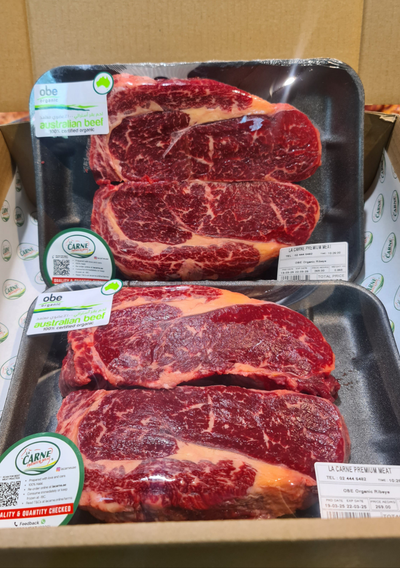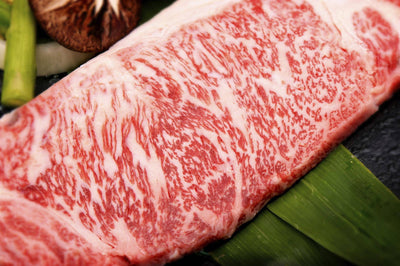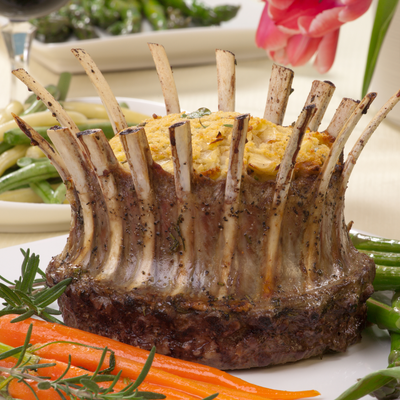A5 Wagyu Grade: Nutritional Facts and Myths
If you’ve ever browsed a premium butcher’s counter or a high-end restaurant menu, you’ve likely come across the term “A5 Wagyu.” It’s often followed by impressive price tags and glowing descriptions about its unmatched tenderness and marbling. But many people in the UAE hesitate before buying it — wondering, Is it really worth the price? Is it too fatty to be healthy? And what makes it so special compared to regular beef?
These are fair questions. Wagyu beef, especially A5 Wagyu grade, has earned a reputation for being both luxurious and mysterious. Let’s break down the myths, the facts, and how you can enjoy it confidently at home.
What does A5 grade mean when it comes to Wagyu?
Wagyu simply means “Japanese cow.” But the beef known globally as Wagyu refers to specific breeds raised in Japan, such as the Kuroge Washu. These cattle are famous for their intense marbling — the fine web of fat that runs through the meat, giving it that buttery texture and melt-in-your-mouth tenderness.
The “A5” label is a quality grade assigned by the Japanese Meat Grading Association. It’s the highest possible grade Wagyu beef can achieve, and it reflects two main factors:
-
Yield Grade (A–C): “A” means the highest yield of usable meat from the carcass.
-
Quality Grade (1–5): “5” is the top score for marbling, colour, texture, and fat quality.
So, when you see A5 Wagyu grade, you’re looking at the finest level of beef available. A meat that’s both rich in flavour and almost impossibly tender. You can even find authentic Japanese Wagyu A5 for sale in specialty stores across the UAE today, making this delicacy more accessible than ever before.
Myths About A5 Wagyu Grade
Because of its reputation and price, Wagyu beef is often surrounded by myths. Here are some of the most common ones and the truth behind them:
Myth 1: Wagyu is just fatty beef.
This is the most widespread misconception. While Wagyu is known for its marbling, not all fat is created equal. The fat in A5 Wagyu contains a higher ratio of monounsaturated fats, which are also called the “good” fats that can help lower bad cholesterol levels. It also has a low melting point, giving it that signature silky texture.
Myth 2: It’s unhealthy because of the fat.
Surprisingly, Wagyu’s fat composition is similar to olive oil. It’s rich in oleic acid, an omega-9 fatty acid known for heart health benefits. When eaten in moderation, A5 Wagyu can fit into a balanced diet and even provide a better fat profile than many other meats.
Myth 3: Wagyu is always imported frozen.
Many believe that authentic Wagyu must travel halfway around the world frozen solid. In truth, top butchers in the UAE now import chilled Wagyu directly from Japan to preserve its texture and flavour. This ensures that when you cook it, you’re enjoying it as close as possible to how it would taste in Tokyo or Osaka.
Myth 4: You need to be a chef to cook it properly.
A5 Wagyu doesn’t need complicated cooking methods. In fact, the simpler, the better. Because of its marbling, it cooks fast and evenly — even a beginner can prepare it perfectly with a little care.
Nutritional Facts About A5 Wagyu Grade
It might surprise many to know that Wagyu isn’t just luxurious, it’s also nutritionally unique. Here’s what sets it apart from regular beef:
1. High in Healthy Fats
A5 Wagyu is high in monounsaturated fats, which can help improve heart health when consumed in moderation. Its ratio of monounsaturated to saturated fat is higher than that of other beef, meaning it contains more beneficial fats.
2. Rich in Omega Fatty Acids
Unlike typical cuts of beef, Wagyu naturally contains omega-3 and omega-6 fatty acids. These contribute to brain health, hormone balance, and overall cell function.
3. Packed with Protein
Despite its tenderness, Wagyu is still a great source of high-quality protein. A 100-gram serving provides roughly 20–25 grams of protein, which supports muscle repair and overall body strength.
4. Contains Essential Vitamins and Minerals
Wagyu is rich in iron, zinc, and B vitamins — nutrients essential for energy production, immune function, and metabolism.
5. Moderate Calorie Content
Because of its fat content, Wagyu has more calories per gram than lean beef. However, it’s often served in smaller portions, around 80–100 grams per serving, as its richness makes even a small piece satisfying.
When enjoyed occasionally and in moderation, Wagyu can be part of a balanced and nutrient-rich diet.
Dishes You Can Make with A5 Wagyu Grade
If you’re lucky enough to get your hands on A5 Wagyu, you’ll want to make the most of it. The key is simplicity; this beef doesn’t need to be hidden behind sauces or heavy marinades. Here are some dishes that let its natural flavour shine:
1. Wagyu Steak
The classic preparation. Slice a thin cut of A5 Wagyu, season lightly with salt, and sear on a hot pan for just 30–60 seconds on each side. The goal is to let the marbling melt without overcooking the meat. Serve it with a sprinkle of sea salt or a touch of soy sauce.
2. Sukiyaki (Japanese Hot Pot)
A comforting and traditional Japanese dish. Thin slices of Wagyu are simmered in a sweet-savoury broth of soy sauce, mirin, and sugar, alongside vegetables and tofu. The beef absorbs the flavour while staying melt-in-your-mouth tender.
3. Wagyu Sushi
A favourite among food enthusiasts, Wagyu sushi features thinly seared slices of beef atop seasoned rice. The contrast between warm, buttery Wagyu and cool rice creates a unique texture and taste experience.
4. Shabu-Shabu (Hot Pot with Dipping Sauce)
Another light and flavourful way to enjoy A5 Wagyu. Dip paper-thin slices briefly into boiling broth and then into a citrusy ponzu or sesame sauce. The beef remains tender and flavourful, with every bite feeling luxurious.
5. Wagyu Sliders or Mini Burgers
For a modern twist, try small Wagyu burgers. Because of the fat content, the patties stay juicy even when cooked through. Pair with caramelised onions or truffle mayo for an indulgent bite.
Why A5 Wagyu Grade Is Worth Trying
Beyond its taste and texture, A5 Wagyu is an experience. It reflects the care, breeding, and precision that Japan is known for. From the cattle’s diet to the strict grading system, every step ensures you’re getting beef that stands apart in quality and nutrition.
In the UAE, where food culture celebrates both tradition and luxury, Wagyu fits perfectly. Whether it’s a special dinner at home or an occasion worth remembering, this beef elevates every meal.
But remember — the secret to enjoying Wagyu lies in balance. A few bites go a long way, both for your taste buds and your health.
To Summarise…
A5 Wagyu grade is more than just an expensive cut of beef — it’s the result of craftsmanship, care, and quality that few other meats can match. While myths about its fat content or complexity often confuse people, the truth is that Wagyu offers both exceptional taste and surprising nutritional benefits.
Whether seared as a steak, served in sushi, or enjoyed in a comforting Japanese hot pot, it’s a meat that transforms ordinary dining into something extraordinary. And with authentic Wagyu now available across the UAE, there’s no better time to try it for yourself.
Meaty regards,
La Carne




















Leave a comment